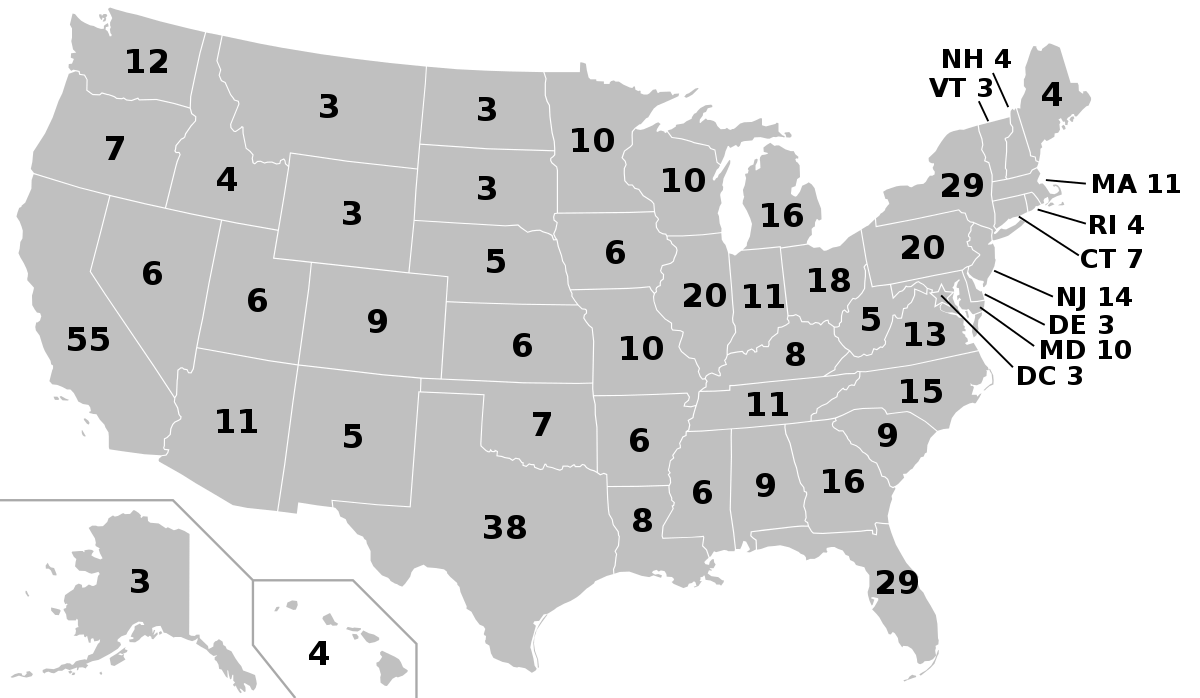Democrat or Republican, Who will Win in Swing States?
According to the poll, recently conducted by The New York Times and Siena College, Joseph R. Biden Jr. holds a clear advantage over President Trump across four of the most important presidential swing states

The United States is holding presidential election today. The whole world, including Pakistan, is closely monitoring it. Although the US is no longer the only superpower in the world, its main rivals China, has emerged as a power, and Russia has rising again. However, the US still maintains its centrality in almost all matters of the world.
Incumbent President Donald Trump and his democratic challenger Joe Biden have campaigned extensively and now look optimistic about their future. For the first time in the US election, early votes have been cast on a large scale.
According to the data revealed on Sunday, record 90 million Americans voted early in the US presidential election.
The high number of early voters, about 65% of the total turnout in 2016, reflects an intense interest in the contest as US President Donald Trump and his Democratic rival Joe Biden campaigned across the country to try to convince the remaining undecided voters.
On the other hand, as always, debating on swing states is taking place on a large scale۔ Swing states have always been very important and playing a decisive role in US election, that’s why both Republicans and Democrats are closely focusing them.
The 77-year-old former vice-president has enjoyed a solid lead over 74-year-old US President Trump in the national polls for months, at times reaching double digits.
A new poll shows, Mr. Biden, the former vice president, is ahead of Mr. Trump in the Northern battlegrounds of Wisconsin and Pennsylvania, as well as in the Sun Belt states of Florida and Arizona, His strength is most pronounced in Wisconsin, where he has an outright majority of the vote and leads Mr. Trump by 11 points, 52 percent to 41 percent.
Mr. Trump’s apparent weakness in many of the country’s largest electoral prizes leaves him with a narrow path to the 270 Electoral College votes required to claim victory, short of a major upset or a systemic error in opinion polling surpassing even the missteps preceding the 2016 election. Should Mr. Biden’s lead hold in three of the four states tested in the survey, it would almost certainly be enough to win, and if he were to carry Florida, he would most likely need to flip just one more large state that Mr. Trump won in 2016 to clinch the presidency.
In the closing days of the campaign, Mr. Biden has a modest advantage in Florida, where he is ahead of Mr. Trump by three points, 47 percent to 44 percent, a lead that is within the margin of error. He leads by six points in both Arizona and Pennsylvania. In no state did Mr. Trump’s support climb higher than 44 percent.
But that doesn’t guarantee the Democratic candidate victory. Hillary Clinton also had a clear lead over Trump in the polls for almost the entire 2016 campaign. She ended up losing in the electoral college.
US presidential elections are not decided by the popular vote. They are won in the 538-member Electoral College, where each state has a number of electoral votes equivalent to its representation in the House and Senate.
Meanwhile, the state of Texas is also being considered important in the 2020 election. For the first time, it is being believed that the Republican Party could lose. Texas has historically been considered a Republican stronghold, but this time the they (Republicans) are being seen vulnerable.
Last week, republican senator Ted Cruz of Texas spoke with President Trump on the phone and told him that Republican have to face competition this time in Texas. His exact words were “We have a fight” in Texas.
Although a Democrat has not carried Texas since 1976. The last time Democratic candidate Jimmy Carter defeated Republican candidate Gerald Ford by a narrow margin, but in the 1980 election, Republican candidate Ronald Reagan, who was later elected as president, defeated Jimmy Carter and took back the hold.
Recent public and private polls suggest a highly competitive race, with some surveys showing Mr. Biden up narrowly and others showing Mr. Trump enjoying a small lead.
Texas’ population has grown rapidly in recent decades, and its 38 electoral votes are second only to California’s 55. The state gained four of these votes after the 2010 Census, and is on track to gain another three after the 2020 Census, giving it 41 beginning with the 2024 presidential election. If demographic trends (e.g., continued rapid growth of Latino population) make the state even remotely competitive, Texas will be one of the major battlegrounds of the next decade.
The employment and rising Covid patients can be the important factors to decide the fate of both the candidates.
The state is a true presidential battleground, and either candidate could prevail.
Picture Courtesy: BBC, CBS, Money Control, CGTN and National Popular Vote.
Survey Courtesy: The New York Times and Siena College.



